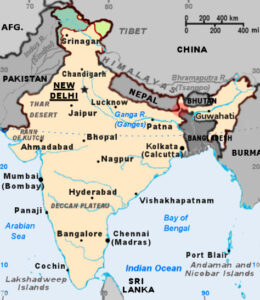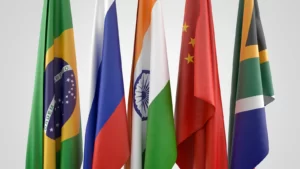- The quest for greater integration among Turkic states has the potential to reconfigure power dynamics in Eurasia and influence international relations;
- Turkey has played a pivotal role, navigating between strategic alliances and interests, while other global players have closely watched the changes taking place;
- The greater integration of OTS countries has a direct impact on Chinese influence in the region.
Strengthening the Organization of Turkic States (OTS) through greater economic and political integration among Turkish states has the potential to play a crucial role in the balance of power in Asia and globally. This initiative promotes the strengthening of Turkish identity, increases international representation and drives regional economic development.
At the same time, it weakens Russia’s and China’s power and influence in the region, offering new competition to China’s rise. This transformation of the OTS into a model similar to the European Union, aiming to remove trade barriers, simplify customs systems and promote the free movement of goods, capital and people, may result in a new geopolitical dynamic.
With OTS consolidating a new Turkish identity and challenging the influence of Beijing and Moscow, the region witnesses a process of balance of power and a quest for geopolitical autonomy, shaping the future of Asia and the world.

What is the Organization of Turkic States and its History
The Organization of Turkic States (OTS) – formerly the Cooperation Council of Turkic-Speaking States – is a regional cooperation initiative that aims to promote collaboration among these Turkic peoples.
The group is built on four main pillars:
- common history;
- common language;
- common identity;
- common culture.
It is worth mentioning that the initiative alludes to the ideology known as Turan – or even as pan-Turkism. The notion of Turan echoes a narrative of ethnic and cultural solidarity, highlighting the importance of a common heritage and the desire to strengthen ties between Turkic countries that are mostly situated in Central Asia.
However, the Turkish Council is not limited to these similarities. Instead, it aims to expand existing bilateral cooperation areas, such as economy, science, education, transport, trade, tourism, among other sectors.
The history of the Organization of Turkic States dates back to the early 1990s, when the leaders of Azerbaijan, Kazakhstan, Kyrgyzstan, Turkmenistan and Türkiye (Turkey’s new official name) expressed interest in establishing a cooperation platform to strengthen relations between their countries. In 1992, these five states founded the organization at a summit held in Ankara, the capital of Turkey.
Initially, in addition to the aforementioned objectives, the group had the main objective of promoting the independence of newly created states after the collapse of the Soviet Union. Then subsequently Uzbekistan joined the organization in 1995.
Over the years, OTS has expanded its areas of cooperation to include issues such as security, culture, energy, environment and counter-terrorism, holding regular summits and ministerial meetings to discuss issues of mutual interest and strengthen cooperation among member states.
In 2009, OTS obtained observer status at the United Nations General Assembly, thus being able to establish partnerships with other international and regional organizations to promote cooperation and dialogue on a broader scale.
How the War in Ukraine Accelerated Cooperation Between Turkic States
Russia’s invasion of Ukraine has raised concerns and instability in the Eurasia region, prompting nations with close ties to Russia to seek to strengthen their collaboration with each other and beyond Moscow.
Soon, as a rule, the Turkish States intensified their cooperation. Turkey has been the driving force behind this cooperation, especially after the strengthening of ties between the ruling party (AKP) and the nationalist party (MHP).
In addition to shared history, there are other pragmatic reasons for cooperation between Turkic language speakers, such as Russia’s willingness to use military force to dominate countries formerly part of the Soviet Union, as seen in the case of Georgia in 2008 and Ukraine in 2022.
It is crucial for Turkic peoples to disassociate themselves from Russia to avoid a negative image and avoid excessive Chinese influence. Turkish leaders do not want to be seen as Russia’s close allies, as none of them supported its invasion of Ukraine.
In addition, Central Asian governments are looking for new trading partners, as relying on Russia has become risky due to restrictions imposed by the West.
How greater economic integration can lead to greater political integration of Turkish states into the European Union model
At the Summit of Heads of State that took place in November 2022 in Samarkand, agreements were signed in which the OTS member states reached a mutual understanding.
Leaders seek to transform the organization into a model similar to the European Union, in what can become the Eurasian Union, removing trade barriers, simplifying customs systems and guaranteeing full freedom of transport, movement of capital and movement of people with a unified state understanding.
Within the framework of the “Middle Corridor project“, two separate tripartite collaborations were established between Turkey-Azerbaijan-Uzbekistan, with the participation of the Ministers of Foreign Affairs, Trade and Transport, and between Turkey-Azerbaijan-Kazakhstan, with Ministers of Foreign Affairs and Transport . Energy ministers also plan to participate in these tripartite formats.
The Middle Corridor extends from Türkiye to Georgia, Azerbaijan and the Caspian Sea via rail and road connections, and from there to China via Turkmenistan-Uzbekistan-Kyrgyzstan or the Kazakhstan route.
Also at the summit, Kazakh President Kassym-Jomart Tokayev presented OTS’s five-year strategy to implement the “Turkic World Vision 2040” document, aimed at strengthening cooperation and the zone of stability among member states.
He proposed the creation of a “digital transport system” to optimize the cargo release procedure and encourage suppliers to enter the international market.
Other proposals by the Kazakh President included the creation of an OTS Digitization Center and a Turkish Countries Venture Fund to boost investment in startup projects and highlighted the importance of green economy development and proposed the creation of a “Turkic Green Finance Council “.
How a unified Turkish mega-state across Asia could threaten Chinese and Russian influence in the region
The strengthening of cooperation ties between the Turkish states, consolidated at the summit in Samarkand, has as one of the main objectives the creation of a new Turkish identity and avoid the excessive influence of China.
Furthermore, the leaders are looking for alternatives to Russian dominance and show a greater willingness to reach out to one another.
By strengthening the Organization of Turkic States, the influence of Beijing and Moscow in the region will consequently be counterbalanced, and may even strongly diminish them.
President Tokayev also underscored at the summit the importance of OTS becoming a powerful and influential force in solving regional and global challenges. He emphasized the need to face together the geopolitical and geoeconomic contradictions that undermine the economy and transport system on the Eurasian continent.
Competition between major international powers brings with it risks and uncertainties, but it also offers opportunities for the Turkish world to increase its global influence. In this context, Turkey can play an important role in solving problems and accelerating the integration process, especially in the midst of tensions between the West, Russia and China.
The importance of greater Turkish integration for the balance of power in Asia and the world
Strengthening the OTS promotes the balance of power in Eurasia, allowing these countries to act in a more cohesive and influential way.
This integration strengthens the stability of Turkish countries, increases international representation, drives regional economic development and preserves Turkish cultural identity, playing a key role in building a multipolar world.
As a result, the region will witness a further weakening of the power and influence of Russia and the countries of the CSTO – a NATO-like military alliance between several countries in Central Asia and Eurasia – which have already suffered losses due to the conflict in Ukraine. At the same time, China’s rise in the region will be faced with new competition given Russia’s questionable conduct.
Turkey, with its pan-Turkish approach and increased engagement with Central Asian countries, is clearly stagnating in its relations with the European Union. Especially with Erdogan’s recent victory for his third term as president, reinforcing his East-oriented policy over the West. This especially affects his candidacy to join the European bloc, which appears to be shelved.
It is important to highlight that Turkey remains an active member of NATO, despite tensions in its relations with the United States. This participation in NATO can result in a convergence of alliances, bringing benefits both to the USA, through NATO, and due to the very existence of OTS, which weakens the power of Russia and China in the region.
In this context, Turkey’s presence in NATO creates an interesting dynamic, in which different alliances and strategic interests intertwine.
As such, these complex developments have the potential to reconfigure power dynamics in the region and influence international relations. It is a scenario in which Turkey plays a central role, navigating between alliances and strategic interests, while other global players closely observe the ongoing changes.
In this way, the OTS initiative reaffirms the aspiration for unity and progress, embracing the rich Turkish heritage and channeling it towards a shared future, where cooperation and solidarity are the foundations of a lasting partnership and challenging Russian and Chinese influence in region.
















Be First to Comment